
Real estate data provider CoStar Group (NASDAQ: CSGP) met Wall Street’s revenue expectations in Q1 CY2025, with sales up 11.5% year on year to $732.2 million. On the other hand, next quarter’s revenue guidance of $772.5 million was less impressive, coming in 1.8% below analysts’ estimates. Its GAAP loss of $0.04 per share was significantly below analysts’ consensus estimates.
Is now the time to buy CoStar? Find out by accessing our full research report, it’s free.
CoStar (CSGP) Q1 CY2025 Highlights:
- Revenue: $732.2 million vs analyst estimates of $730 million (11.5% year-on-year growth, in line)
- EPS (GAAP): -$0.04 vs analyst estimates of $0.01 (significant miss)
- Adjusted EBITDA: $65.6 million vs analyst estimates of $30.51 million (9% margin, significant beat)
- Revenue Guidance for the full year is $3.14 billion at the midpoint, roughly in line with what analysts were expecting
- EBITDA guidance for the full year is $370 million at the midpoint, below analyst estimates of $389.9 million
- Operating Margin: -5.8%, in line with the same quarter last year
- Free Cash Flow was -$26 million, down from $136 million in the same quarter last year
- Market Capitalization: $33.52 billion
Company Overview
With a research department that makes over 10,000 property updates daily to its 35-year-old database, CoStar Group (NASDAQ: CSGP) provides comprehensive real estate data, analytics, and online marketplaces for commercial and residential properties in the U.S. and U.K.
Sales Growth
A company’s long-term sales performance can indicate its overall quality. Even a bad business can shine for one or two quarters, but a top-tier one grows for years.
With $2.81 billion in revenue over the past 12 months, CoStar is a mid-sized business services company, which sometimes brings disadvantages compared to larger competitors benefiting from better economies of scale. On the bright side, it can still flex high growth rates because it’s working from a smaller revenue base.
As you can see below, CoStar’s 14% annualized revenue growth over the last five years was exceptional. This is an encouraging starting point for our analysis because it shows CoStar’s demand was higher than many business services companies.
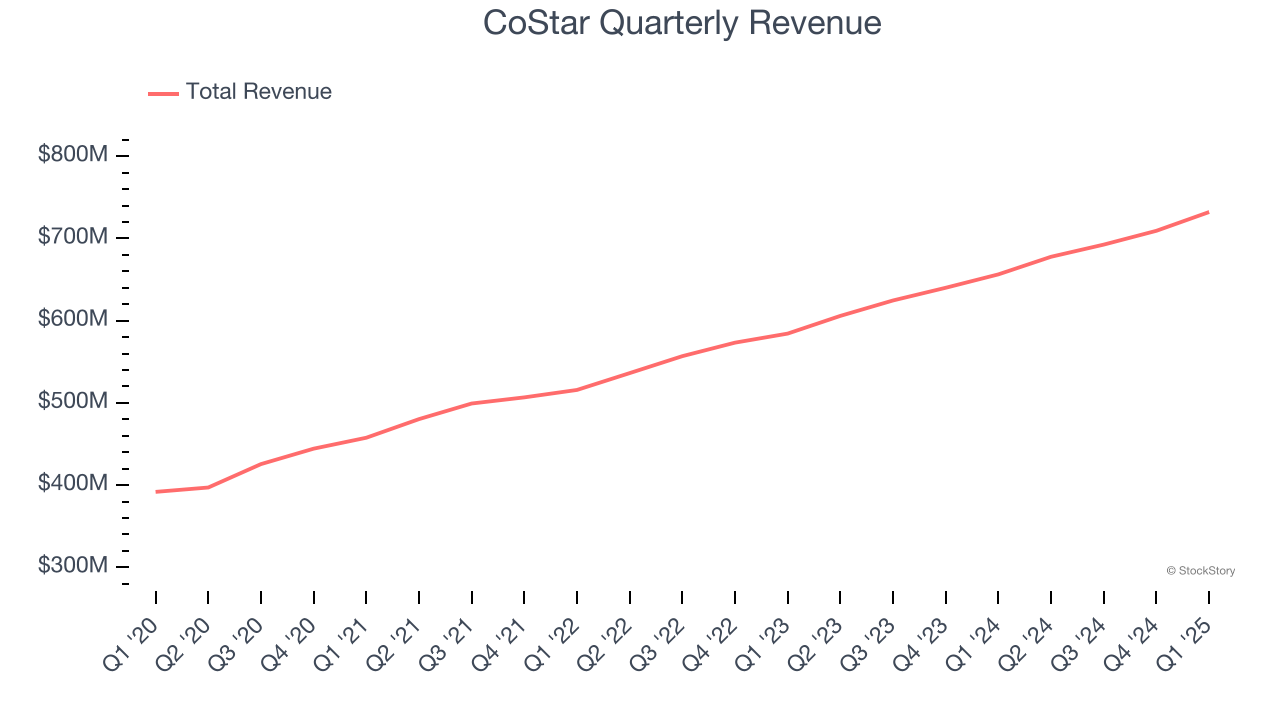
We at StockStory place the most emphasis on long-term growth, but within business services, a half-decade historical view may miss recent innovations or disruptive industry trends. CoStar’s annualized revenue growth of 11.8% over the last two years is below its five-year trend, but we still think the results suggest healthy demand. 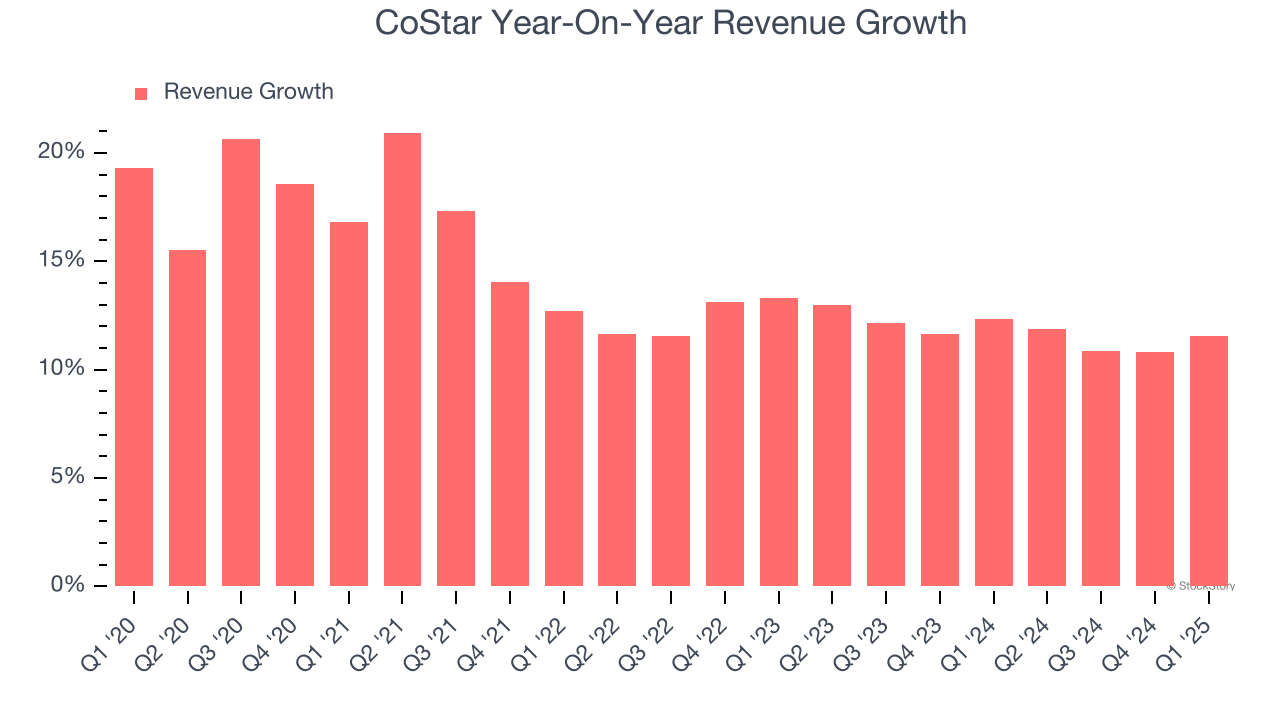
This quarter, CoStar’s year-on-year revenue growth was 11.5%, and its $732.2 million of revenue was in line with Wall Street’s estimates. Company management is currently guiding for a 14% year-on-year increase in sales next quarter.
Looking further ahead, sell-side analysts expect revenue to grow 16% over the next 12 months, an improvement versus the last two years. This projection is eye-popping and indicates its newer products and services will catalyze better top-line performance.
Here at StockStory, we certainly understand the potential of thematic investing. Diverse winners from Microsoft (MSFT) to Alphabet (GOOG), Coca-Cola (KO) to Monster Beverage (MNST) could all have been identified as promising growth stories with a megatrend driving the growth. So, in that spirit, we’ve identified a relatively under-the-radar profitable growth stock benefiting from the rise of AI, available to you FREE via this link.
Operating Margin
Operating margin is an important measure of profitability as it shows the portion of revenue left after accounting for all core expenses – everything from the cost of goods sold to advertising and wages. It’s also useful for comparing profitability across companies with different levels of debt and tax rates because it excludes interest and taxes.
CoStar has done a decent job managing its cost base over the last five years. The company has produced an average operating margin of 11.8%, higher than the broader business services sector.
Analyzing the trend in its profitability, CoStar’s operating margin decreased by 18.1 percentage points over the last five years. This raises questions about the company’s expense base because its revenue growth should have given it leverage on its fixed costs, resulting in better economies of scale and profitability.
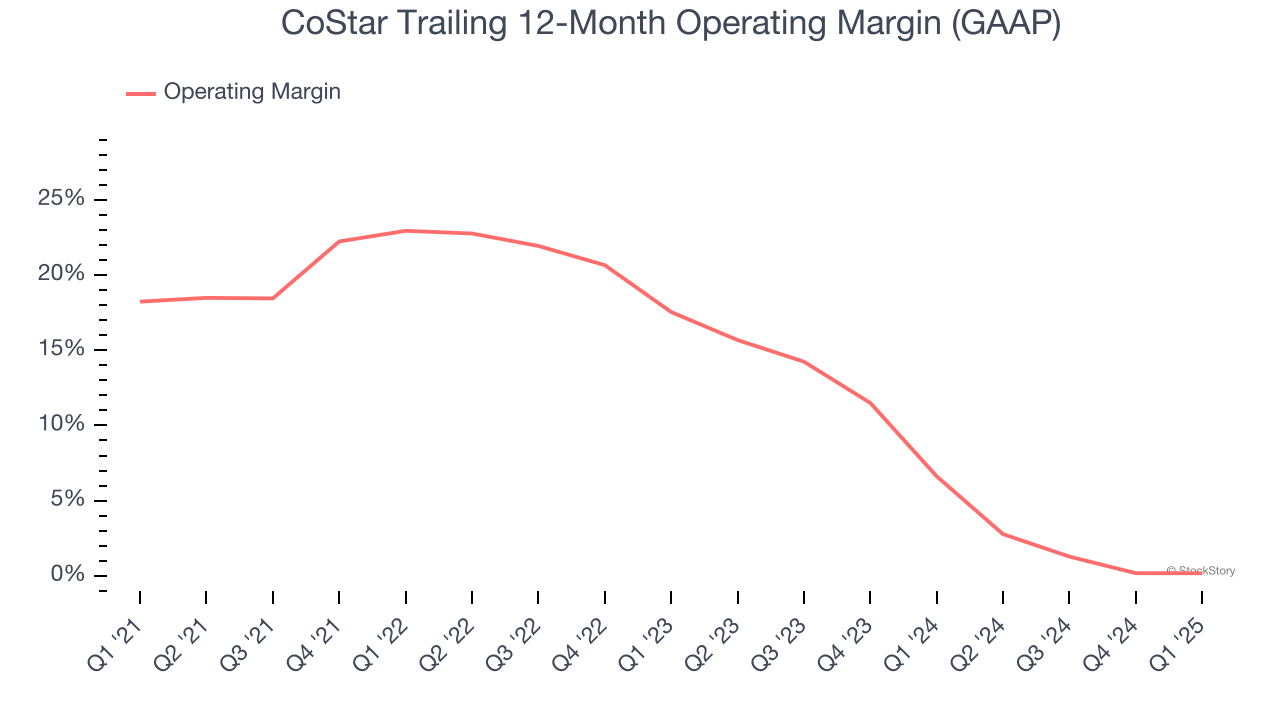
In Q1, CoStar generated an operating profit margin of negative 5.8%, in line with the same quarter last year. This indicates the company’s overall cost structure has been relatively stable.
Earnings Per Share
We track the long-term change in earnings per share (EPS) for the same reason as long-term revenue growth. Compared to revenue, however, EPS highlights whether a company’s growth is profitable.
Sadly for CoStar, its EPS declined by 19.2% annually over the last five years while its revenue grew by 14%. This tells us the company became less profitable on a per-share basis as it expanded.
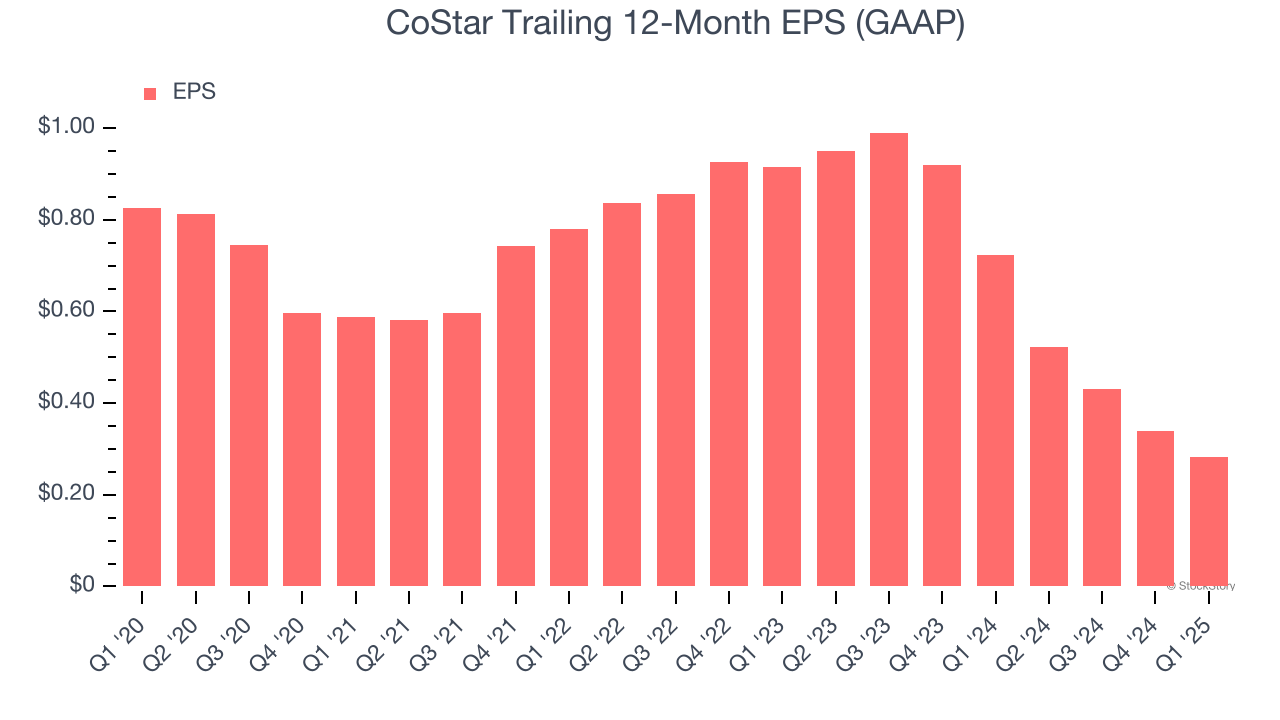
We can take a deeper look into CoStar’s earnings to better understand the drivers of its performance. As we mentioned earlier, CoStar’s operating margin was flat this quarter but declined by 18.1 percentage points over the last five years. Its share count also grew by 11.6%, meaning the company not only became less efficient with its operating expenses but also diluted its shareholders. 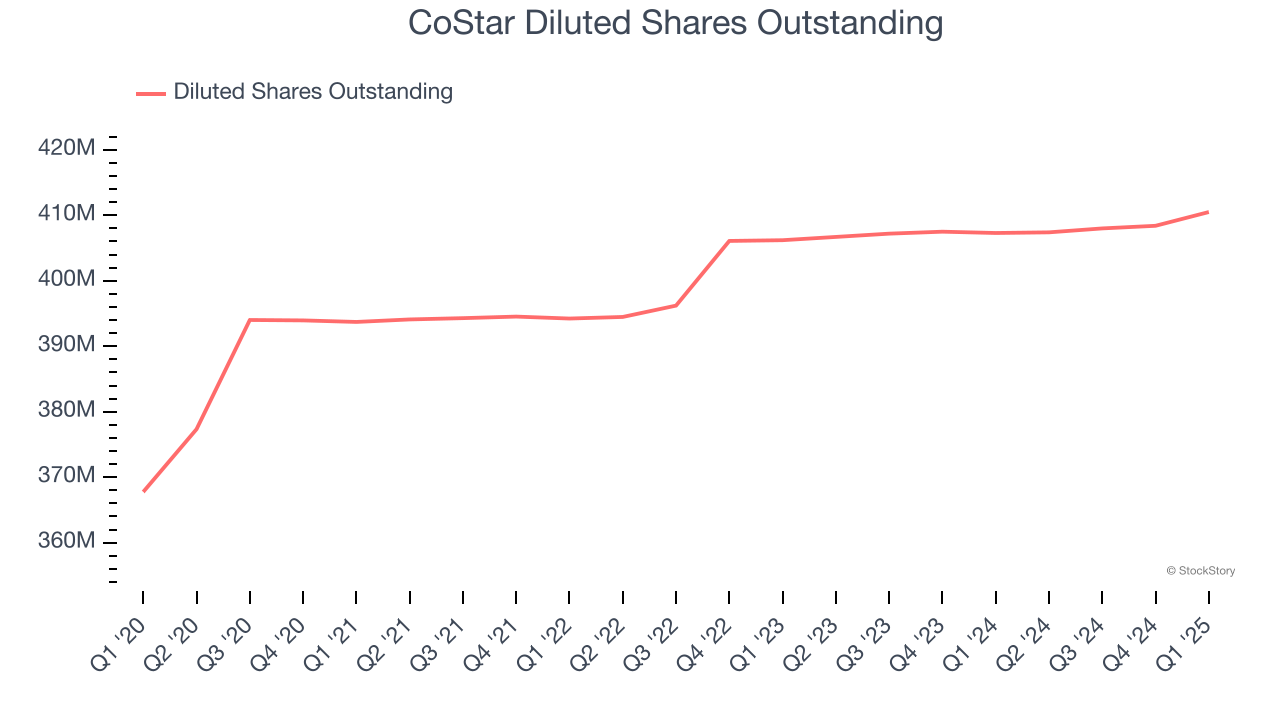
In Q1, CoStar reported EPS at negative $0.04, down from $0.02 in the same quarter last year. This print missed analysts’ estimates. Over the next 12 months, Wall Street expects CoStar’s full-year EPS of $0.28 to grow 139%.
Key Takeaways from CoStar’s Q1 Results
We struggled to find many positives in these results. Although its EBITDA beat, its EPS missed significantly and its full-year EBITDA guidance fell short of Wall Street’s estimates. Overall, this quarter could have been better. The stock remained flat at $82.18 immediately following the results.
CoStar may have had a tough quarter, but does that actually create an opportunity to invest right now? If you’re making that decision, you should consider the bigger picture of valuation, business qualities, as well as the latest earnings. We cover that in our actionable full research report which you can read here, it’s free.







